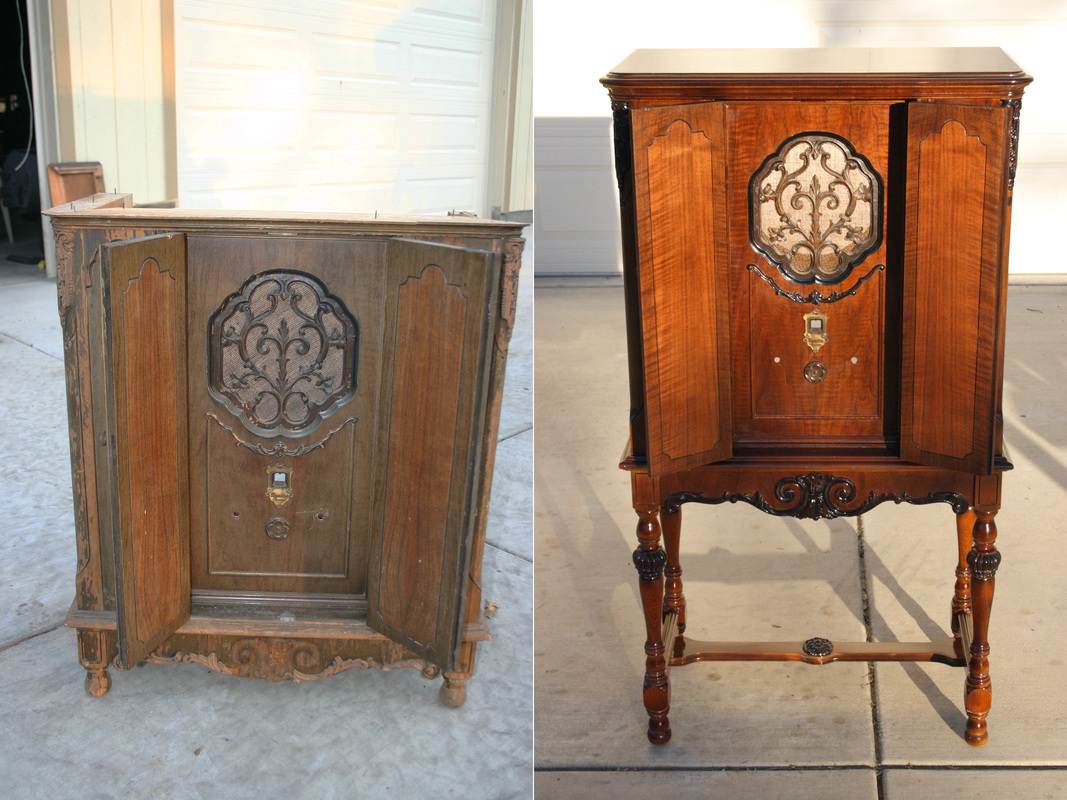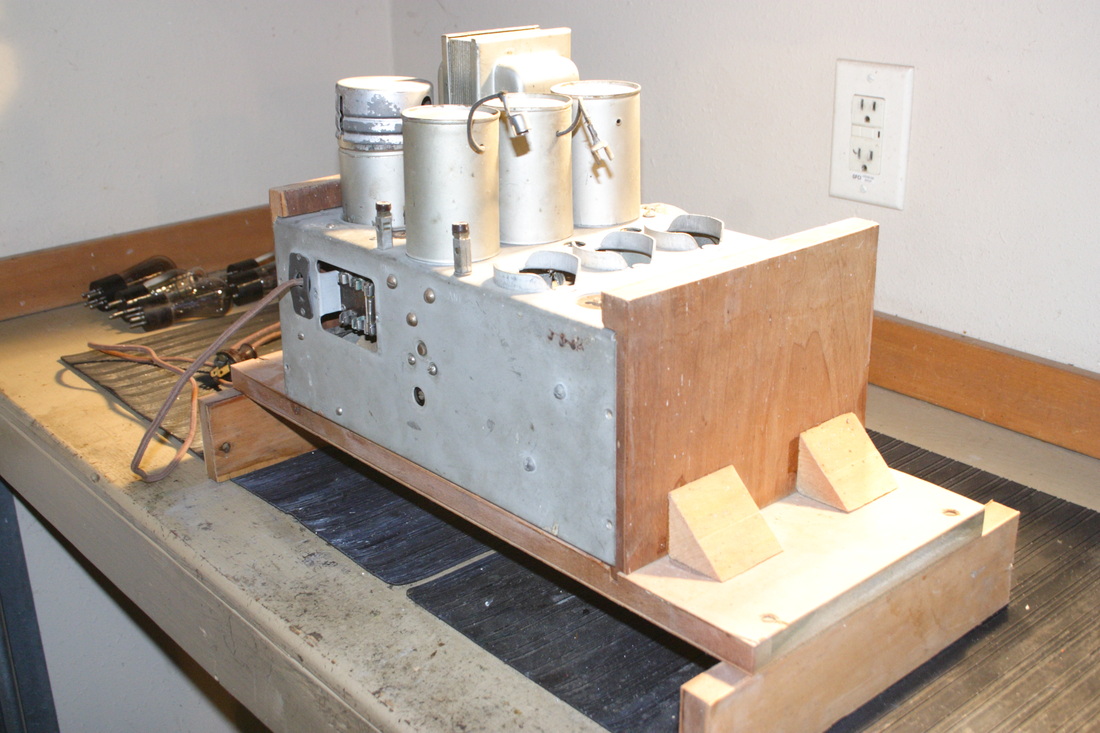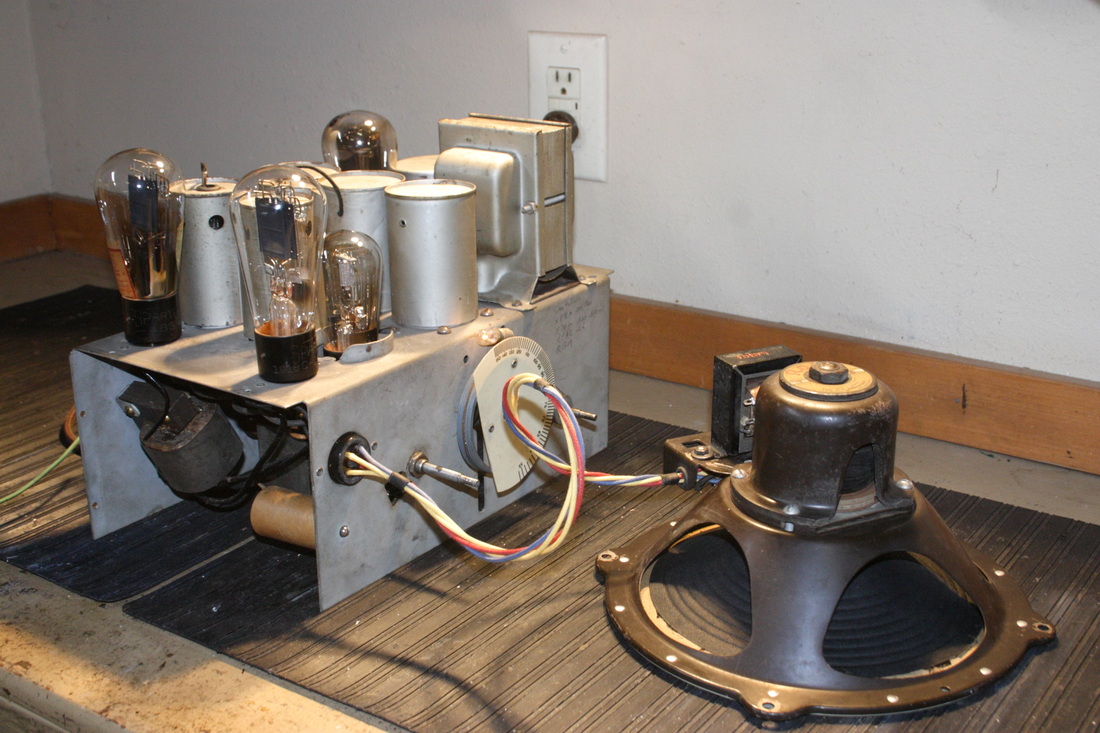We walked along looking for, you guessed it, old radios. Spotted in the driveway, leaning against a post was this very short console. It had to lean since the parts were no longer held together by glue. The story was that this old radio came from a pile of old radios and parts that were the remnants of an old repair shop that had closed the same year that I was born and that was a while ago. It was told that the old fellow stored the radios in a barn, he passed away and later a tree fell on the barn. Some of the old gear was exposed to a lot of moisture and that is where the glue went.
So, I offered $20 for the tubes in the flimsy, short cabinet. The seller said "OK", but I had to take the cabinet as well. We had driven the car to town. I might have gotten the radio to fit but decided to meet the fellow the next day at his home, besides, there were other items from the barn there too.
The next day I spent $100 and loaded the back of my pickup full of cool old stuff and the various parts of the disintegrating Sparton radio.
And so, time passed and passed and one day I saw what the radio needed, about 300 miles away. So off we went to pick up a non functioning but seemingly intact Sparton 620 (no "A").
Well somebody had worked on this 620. Known as an Equasonne, it was a large chassis - and heavy. It was missing a lot of parts including the big filter cap. It had also been raided for the speaker by the owners son who was probably wanting to acquire a big base "thumper" for his tunes. We all know how this always turns out and why replace a speaker that "doesn't work" (for him)? So the speaker was gone but I did not need it anyway and as it turns out, I did not even need the shelf that it mounted to.
The year was 1930. Sparton had been manufacturing the Equasonne radios and their own line of tubes to try to avoid paying RCA patent royalties. None the less, the two companies were in court. Sparton had the resources to challenge RCA where most smaller companies didn't. Yet they were likely to loose any claim regarding tube design in court and their Equasonne receiver worked but was no match for a good TRF let alone a super-heterodyne. They had reached an agreement with RCA which would bring to an end both the Equasonne and the now rare and expensive Sparton/Cardon designed tubes.
The Sparton Junior 410 was one of the first radios the company made following the agreement. It was a TRF (Tuned Radio Frequency) receiver. Though branded Sparton, the tubes it used were conventional RCA models except the 2 push-pull output tubes and these were Sparton 183/483s which were baisicly a 45 (UX-245) with a 5 volt filament. I believe this was done simply to use up remaining tube stock at Sparton.
A few notes:
Never confuse a Sparton/Cordon tube from this period with a similarly numbered RCA (or other brand) tube. A Sparton 483 is not the same tube as an 83 where as a 27 is a replacement for a 227. Making this mistake will cause bad things to happen!
The original Rola speaker found in the 410 Junior was silver not brown. Unknown as to the color in this console.
Has anyone seen another Sparton 620A?
The radio still needs a set of Sparton 410 style knobs.











 RSS Feed
RSS Feed